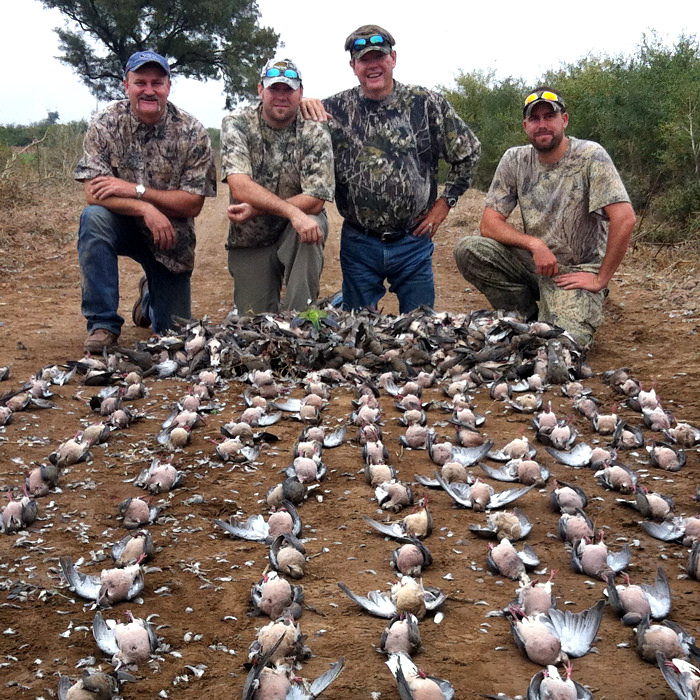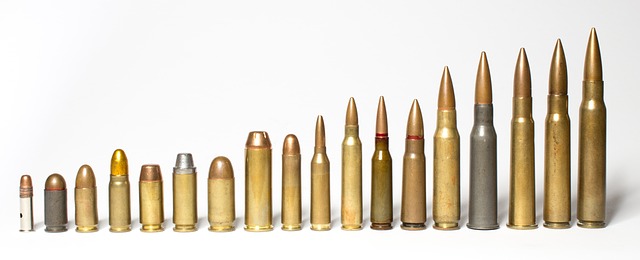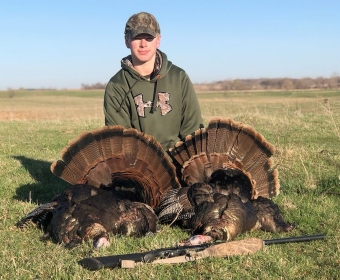
Minnesota residents over 18 years old can hunt spring turkeys. The state has made significant changes to its licensing requirements. Hunting licenses will be available at local stores starting in 2011. They can hunt in any zone that is open for gun hunting. The first five seasons start on Wednesday and the last one lasts 13 days. The following information will give you all you need to know about how to pursue a trophy bird.
The state's turkey hunting regulations for the coming year will be similar to previous years. Hunting licenses won't restrict hunters to one area. Instead, hunters will have access to all areas of the state through their license. Three major wildlife management areas are the exception. They will need a lottery permit and must obtain it by February 12. Whitewater, Carlos Avery, Mille Lacs are three of the major wildlife management zones.

Minnesota turkey hunting is a wonderful way to celebrate the holidays. The state also has some of the largest turkey populations in the country. The majority of turkeys can be harvested within the first two seasons. The harvest declines rapidly during the rest of the season. The first few weeks of the season are the best times to enjoy the game. If the population drops, the DNR will issue additional permits.
The state's turkey hunting season for spring turkeys is open to all. The season runs from April 14 to May 31. Minnesota permits hunters to only take one turkey per season, but some states allow hunters the ability to harvest multiple turkeys. In addition, the dnr announced that hunting will be allowed without a lottery system by 2021. For this reason, it is important to know that the Minnesota Department of Natural Resources is promoting habitat improvement projects that protect the species.
According to DNR, turkey hunting in Minnesota increased significantly since 1978. Since 1978, Minnesota's average spring season harvest has increased 36%. The state's last year issued 63,194 permits that allowed hunters to kill 13,996 birds. In addition, hunters have registered an unprecedented number of birds. The perfect place for spring turkey hunting is Minnesota!

Two types of Minnesota DNR turkey hunting licenses are available. This license allows firearm hunters to hunt turkeys anywhere in the state. Archery-only licenses allow the hunter to hunt statewide. Hunt F is for those who have a firearm.
FAQ
Can I bring my dog along?
In most states, hunting dogs with humans is prohibited. However, certain states have laws that permit this practice. To find out if it is permitted in your state, check with the department of natural resources.
Some hunters even bring their pets along. Some hunters find that having a pet allows them to relax while they hunt. Others believe that a companion helps them avoid getting lost.
However, it is possible to have problems with bringing your pet. Dogs can chase after animals and may even attack the hunter. Wild animals could also attack the pet.
What do I need to know about hunting?
Hunting success requires that you understand the movements and habits of your animal as well as how to avoid injury.
It is important to know the laws regarding hunting in your state. Some states allow certain types of hunting while others prohibit it completely.
Weather conditions, terrain, as well as the weapon type are all important factors.
Consider whether hunting is something you want to do alone or with friends.
Most hunters prefer hunting with others. This is because it helps you focus on your goal. If you are by yourself, you might miss your shot.
Hunting also requires a lot of preparation. You will need to plan so you can find an appropriate place to hunt.
Prepare your weapons as well. Before you leave, clean and inspect your guns to make sure they are in good condition.
When hunting, you should always wear appropriate clothing. Always dress appropriately for the weather.
It is important to ensure that you have enough food and water. For any emergency, you should always have extra ammunition and supplies.
It is important to never leave anything behind. It might get lost or damaged.
Before you start hunting, make sure you pick a safe spot that doesn't have any predators.
Be sure to follow the government's rules. These regulations protect both wildlife & humans.
What kind of training do I need to become a hunter? How long is it?
You must take a basic course to learn how to hunt. This course covers the basics of hunting, as well as information on the laws.
You will learn how you can safely use ammunition and firearms. These items can also be used safely.
This course can be completed in two weeks or three months. Some courses can also be done online. Others are taught in person.
Passing a written test is necessary to obtain a license. A hunter education course may also be required.
What is the cost of getting licensed? What if I don’t make enough money?
It varies from one state to the next. It ranges from $20 to over $100.
You may be eligible to receive a grant or loan if your income is not sufficient.
Additional to paying the fee, you'll need to buy a tag. Prices for tags vary depending on what type of game you hunt.
There are tags available for bear, elk and moose as well as waterfowl, upland birds and furbearers, such as foxes.
You may need to register with the Department of Natural Resources in some states before you can get a license.
Before you go out hunting, make sure you check all local regulations.
What is the most important thing about hunting animals?
How can we achieve this? The first step is to learn how to shoot accurately. We must then learn to hit our target. Finally, we need to learn how we can make adjustments if we fail.
Knowing what you are doing is the most important aspect of hunting. If you don't know what you're doing, then you'll never improve. While you may think that you've improved by taking better shots, the fact is that you won't be able to use those shots as a guide. The same goes for hitting targets. If you don’t get why you’re not succeeding, you won’t be able to change. This means that you must know what you are aiming for.
This is where knowledge comes in. Understanding the animal you are hunting will determine your ability to hunt it. It's important to understand all you can about animals when you're outside in the wild. You want to know their habits, their behaviors, and even their personalities. You will be able to plan your hunts efficiently and smoothly.
It is important to always learn from other people who have achieved success in the past. This topic is covered in many books. In addition, there are websites like www.thehuntingzone.com that offer great tips and advice. People with many years of experience are another benefit. They will help you determine what works and what does not.
It's time for you to practice once you've learned all that you can. Practice makes perfect. You shouldn't practice until your confidence is high. Instead, practice until you feel confident. Confidence allows you to relax and enjoy the process. Relaxation allows you to focus on the task at hand. Concentration allows for you to make the most of every opportunity. Opportunities only come when you are relaxed and focused.
Now it's time put your new skills to work. If you fail, don't be discouraged. You can keep improving and practicing. Eventually, you'll find success.
What guns can you legally use?
There are many different types of weapons you can use while hunting.
Hunters often use rifles shotguns handguns and muzzleloading firearms.
Rifles have long range capabilities and can fire bullets. Shotguns are loaded with pellets. Handguns are made to fire bullets through your hand. Muzzle-loading firearms can be used in the same way as modern pistols.
Crossbows can be used to shoot arrows. Bowhunters are also known for their archery weapons.
You need to be skilled in hunting with a crossbow. You must first learn how to properly aim and shoot the weapon.
What is the U.S. Department of Agriculture's (USDA) estimation of deer hunting?
USDA estimates that about 6 million Americans hunt deer. Only 2.2 million shoot one.
This means that only 0.6 percent kill deer each year.
Is hunting dangerous?
Yes, hunting can cause injuries.
There are many ways to injure your self.
One way is through improper shooting techniques. For example, you may shoot at the wrong angle or hit the wrong part of the animal.
Another possibility is to be attacked by another pet.
Hunting accidents happen every year. Many people are injured or killed by their guns every year.
Hunters should always keep their guns unloaded until they have reached their destination.
When they are out in the woods, they should make sure that their guns don't get loaded.
Always keep an open mind. Listen for the sounds and be attentive to your surroundings.
You must be able to defend yourself against any animal that you approach.
Never chase after prey. Instead, wait patiently to see them.
Avoid taking shortcuts. They can lead to injury or death.
Avoid cliffs or other areas where you can't see the bottom.
Avoid rivers and streams. These places could flood unintentionally.
It is best to not drink alcohol while hunting. Alcohol affects your judgment and slows down reaction time.
Always keep all safety equipment close by. Always keep a flashlight and a first aid kit close by.
It is crucial to be able respond to an emergency. You don't need to know how to do CPR or first aid. Find someone who does.
Statistics
- - Percent of residents with paid hunting licenses: 0.7%- (stacker.com)
- - Percent of residents with paid hunting licenses: 0.7%- (stacker.com)
- Less than 1% of Hawaii's population has a hunting license. (stacker.com)
- According to the Wildlife Restoration Act, passed in 1937, most of the state conservation efforts are funded through hunting and fishing license sales and firearms sales. (stacker.com)
External Links
How To
How to choose the most desirable hunting spots in the forest
It is important to identify the type of game that you are hunting before searching for suitable places to hunt. There are different types of animals and birds that live in forests and they all have their own habitat requirements, so if you don't know which type of animal you would like to hunt, you won't find any place where you can successfully catch them.
There are two major types of forest animals: small and large mammals. Large mammals include deer and elk as well as moose, caribou bear, wolf, and wild hare. The smallest animals are rabbits (squirts), squirrels, hares and partridges. Each species requires a specific habitat. You must ensure that you pick the right location before venturing out into the woods. Online information can be accessed to check if endangered species are found near your home. You must ensure that your hunting area is protected from poaching if it's a species you wish to hunt.
If you decide to hunt a particular species, then you'll need to know how to properly set up your equipment. The success rate of hunting a particular species will be affected if you don't use the right equipment. For example, if you're hunting a rabbit, you'll need a gun that shoots accurately at close range, while if you're hunting a larger animal such as a deer, you'll need a rifle capable of shooting long distances. To attract prey, you will need some kind of bait. Some people suggest placing meat in a trap to attract the animal. Others prefer corn butter or peanut butter. Whatever your choice, make sure to follow all rules and regulations in the country where hunting is taking place.
You need to consider many factors when choosing a hunting location, including weather conditions, terrain, vegetation and wildlife population. Safety is the main consideration when hunting. It is important to choose a safe hunting area that is free of predators and other dangerous animals. Avoid areas with too many people, especially during hunting seasons. It is important to note the seasons when hunting, as this will help you decide the best time to hunt.
You should consider the weather when choosing a hunting location. This is very important because it determines the number of animals that will be around. When temperatures drop below zero Celsius, snow covers the ground. Snow can make it difficult to locate deer, bears or wolves. If you have a clear day, however, you may be able to spot these animals. On the other hand, in summer, the temperatures rise above 30 degrees Celsius, and the sun warms the earth. It is easier for animals to find shelter from the heat, as they move away from it.
It is important to consider the terrain. It is easier to walk or run on a flat surface, but it can be difficult to do so on uneven surfaces. Steep slopes make it more difficult to climb. Additionally, streams and rivers often leave muddy tracks. Try to find a place that doesn't have any obstacles, so you can easily travel through the area.
Look at the vegetation, as well. The environment can affect the size and density of plants. For smaller animals, large trees can provide shade and cover while shrubs or bushes can offer shelter. Dense vegetation will help you find large animals.
You should also be aware of the wildlife. Statisticians estimate that North America has more than 100 million deer. They eat almost half of the food produced by crops, and they play an essential role in maintaining biodiversity. However, if the population grows too big, they could become pests and damage the ecosystem. Therefore, it's important to keep the population balanced.